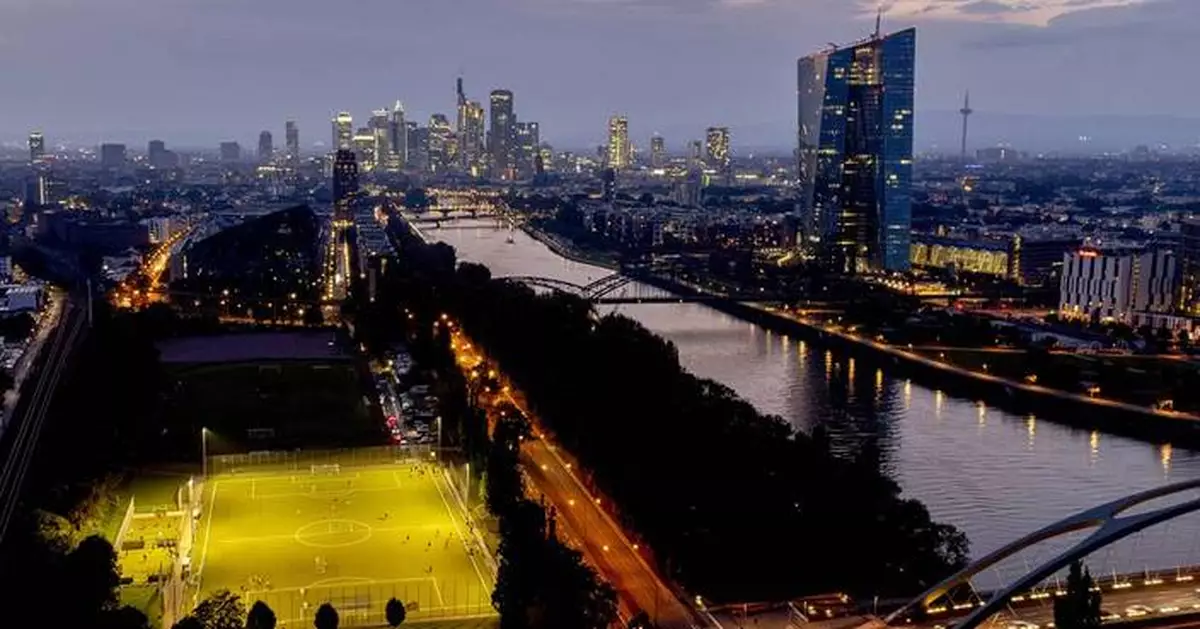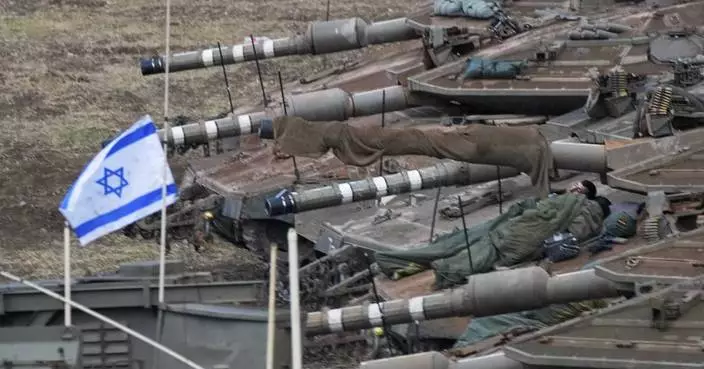FRANKFURT, Germany (AP) — Inflation in the 20 countries that use the euro fell to 1.8% in September, below the European Central Bank's target of 2% for the first time in more than three years as falling energy prices give consumers relief from a burst of inflation that at one point reached into double digits.
Tuesday's official figure coupled with an anemic growth outlook could pave the way for faster interest rate cuts from the ECB, which has already trimmed rates twice.
Inflation fell from 2.2% in August, according to European Union statistics agency Eurostat. The last time inflation hit the ECB's 2% goal was in June 2021 when it was 1.9%.
Economists have started to consider the possibility of a rate cut at the bank's Oct. 17 meeting. A few weeks ago, the expectations were that the central bank would wait until December before lowering borrowing costs again for consumers and businesses.
The bank must juggle the need to make sure inflation is under control, which would mean waiting longer to lower rates, against concerns over slow economic growth, which would argue for swifter cuts.
Higher central bank interest rate benchmarks combat inflation by raising rates throughout the economy, making it more expensive to borrow and spend. That reduces demand for goods and pressure on prices. But that also slows economic activity.
The ECB, U.S. Federal Reserve and other central banks rapidly raised rates to combat a burst of inflation that broke out as the economy rebounded from the pandemic, straining supplies of parts and raw materials, and after Russia invaded Ukraine. Now those rates are being scaled back; the Fed cut by an outsized half-percentage point at its last meeting.
The invasion led Russia to cut off natural gas pipeline supplies to Europe, spiking energy prices there and raising fears that Russia oil would be lost to the global market. Those strains have largely eased and inflation is low enough that central banks are cautiously trimming rates to keep the economy chugging.
The ECB might not be able declare final victory over inflation quite yet. Economists expect inflation to tick slightly higher before the end of this year, and some underlying measures of inflation such as services prices are still high enough to instill caution. Bank President Christine Lagarde has said the bank is not committing to a future rate cut schedule but will take decisions meeting to meeting based on incoming economic data.
Energy prices provided much of the relief in Tuesday's figure, falling by 6%. Inflation was below target in the eurozone's biggest economy, Germany, at 1.8%, and well below the target in No. 3 economy Italy at 0.8%. Low inflation in Germany, however, is in part a reflection of weak growth in that economy.
The eurozone economy grew only a modest 0.3% in the second quarter over the the quarter before, as consumer spending remains lackluster against a background of unsettling news over wars in the Middle East and Ukraine and reports of layoffs or potential job cuts at major firms.

FILE - The European Central Bank stands at right as soccer players practise on a field next to the river Main, in Frankfurt, Germany, late Thursday, Sept. 19, 2024. (AP Photo/Michael Probst, File)
TOKYO (AP) — Japan's parliament elected Shigeru Ishiba as the new prime minister on Tuesday, tasked with addressing public outrage over his governing party's corruption scandals ahead of a parliamentary election later this month, while trying to boost the economy and tackle security challenges from China and North Korea.
Ishiba replaces Fumio Kishida, who stepped down earlier Tuesday to pave the way for a fresh leader after Kishida's government was dogged by scandals.
Ishiba entered the Prime Minister's Office and formed his Cabinet, which includes several security and defense experts, as he has called for a stronger regional military alliance and a more equal Japan-U.S. security partnership.
Ishiba will hold a news conference later Tuesday to announce his Cabinet and some of his policy priorities.
Ishiba said he plans to call a parliamentary election for Oct. 27 so his new administration can have “the people's judgement” as soon as possible.
Ishiba appointed to his Cabinet two former defense ministers with whom he has worked closely — Takeshi Iwaya as foreign minister and Gen Nakatani as defense chief — underscoring his emphasis on defense and security policies.
Only two of the 19 ministers are women: actor-turned-lawmaker Junko Mihara as children’s policy minister and Toshiko Abe as education minister. The government is under pressure to increase the number of women in public office. Women now account for only 10% of the lower house, placing Japan near the bottom of global gender-equality rankings.
Ishiba appointed several ministers who voted for him in the party leadership poll and retained Kishida's top confidante, Yoshimasa Hayashi, as chief Cabinet secretary. He also appointed Katsunobu Kato as finance minister. Hayashi also previously served as defense minister.
The majority of his Cabinet members, including Ishiba, are unaffiliated with factions led and controlled by party heavyweights, and none are from former Prime Minister Shinzo Abe’s powerful group linked to damaging scandals.
Ishiba’s lack of a stable power base could also mean his government will be fragile and “could quickly collapse” even though Ishiba hopes to build party unity as it prepares for the upcoming election, the liberal-leaning Asahi newspaper said.
The move is also seen as revenge by Ishiba, who was largely pushed to the side during most of Abe’s reign.
Ishiba announced his party’s leaders Monday ahead of naming his Cabinet. Former Environment Minister Shinjiro Koizumi, who came in third in the party leadership race, will head the party’s election task force.
“I will squarely face the people, discuss policies sincerely to gain their understanding. My government won’t walk away from challenges and get things done,” Ishiba said before the parliamentary vote.
Opposition leaders criticized Ishiba for announcing such a plan before even becoming leader and allowing only several days for his policies to be examined and discussed in parliament before the national election. The parliament Tuesday adopted a plan to have sessions until Oct. 9, when Ishiba is expected to dissolve the lower house ahead of the Oct. 27 vote.
Opposition protests delayed the start of the parliamentary vote by about half an hour, signaling a rocky beginning for Ishiba.
Kishida had announced in August he would resign at the end of his three-year term to pave the way for a fresh leader ahead of the next national election, as corruption scandals dogged his party and government.
Earlier Tuesday, Kishida and his ministers stepped down at a Cabinet meeting. Kishida left his office after a brief send-off ceremony in which he was presented a bouquet of red roses and applauded by his staff and former Cabinet members.
“As we face a critical moment in and outside the country, I earnestly hope key policies that will pioneer Japan's future will be powerfully pursued by the new Cabinet,” Kishida said in a statement.
Ishiba has proposed an Asian version of the NATO military alliance and more discussion among regional partners about the use of the U.S. nuclear deterrence. He also suggested a more equal Japan-U.S. security alliance, including joint management of U.S. bases in Japan and having Japanese Self Defense Force bases in the United States.
Ishiba outlined his views in an article to the Hudson Institute last week.
Ishiba proposes to combine existing security and diplomatic groupings, such as the Quad and other bilateral and multilateral frameworks involving the United States, Australia, New Zealand, South Korea and the Philippines.
He noted that an Asian version of NATO could also consider sharing control of U.S. nuclear weapons in the region as a deterrence against growing threats from China, North Korea and Russia.
He pledged to continue Kishida’s economic policy aimed at pulling Japan out of deflation and achieving real salary increases, while tackling challenges such as Japan’s declining birthrate and population and resilience to natural disasters.
The LDP has had a nearly unbroken tenure governing Japan since World War II. The party members may have seen Ishiba’s more centrist views as crucial in pushing back challenges by the liberal-leaning opposition and winning voter support as the party reels from corruption scandals that drove down Kishida’s popularity.
Ishiba, first elected to parliament in 1986, has served as defense minister, agriculture minister and in other key Cabinet posts, and was LDP secretary general under Abe.
Follow AP's Asia-Pacific coverage at https://apnews.com/hub/asia-pacific
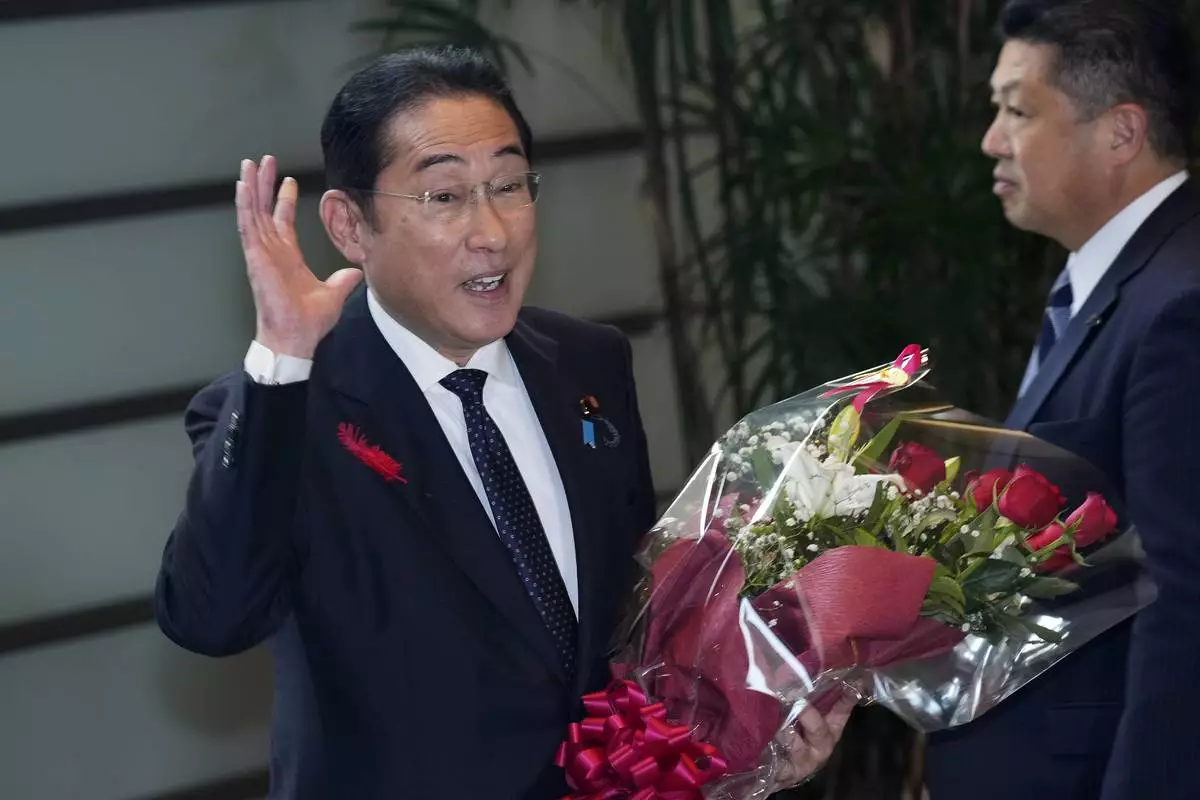
Japan's outgoing Prime Minister Fumio Kishida stops as media members asked him to make a comment before he leaves the prime minister's office in Tokyo Tuesday, Oct. 1, 2024. (AP Photo/Hiro Komae)
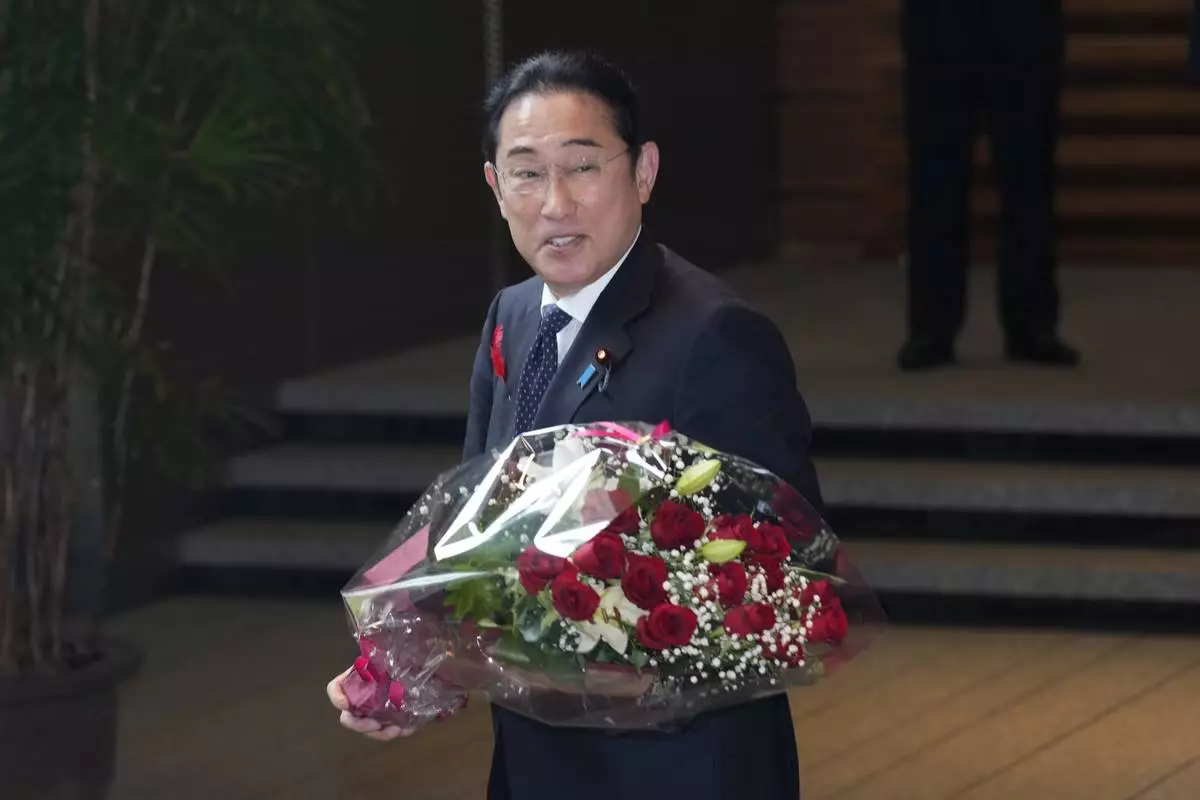
Japan's outgoing Prime Minister Fumio Kishida stops as media members asked him to make a comment before he leaves the prime minister's office in Tokyo Tuesday, Oct. 1, 2024. (AP Photo/Hiro Komae)
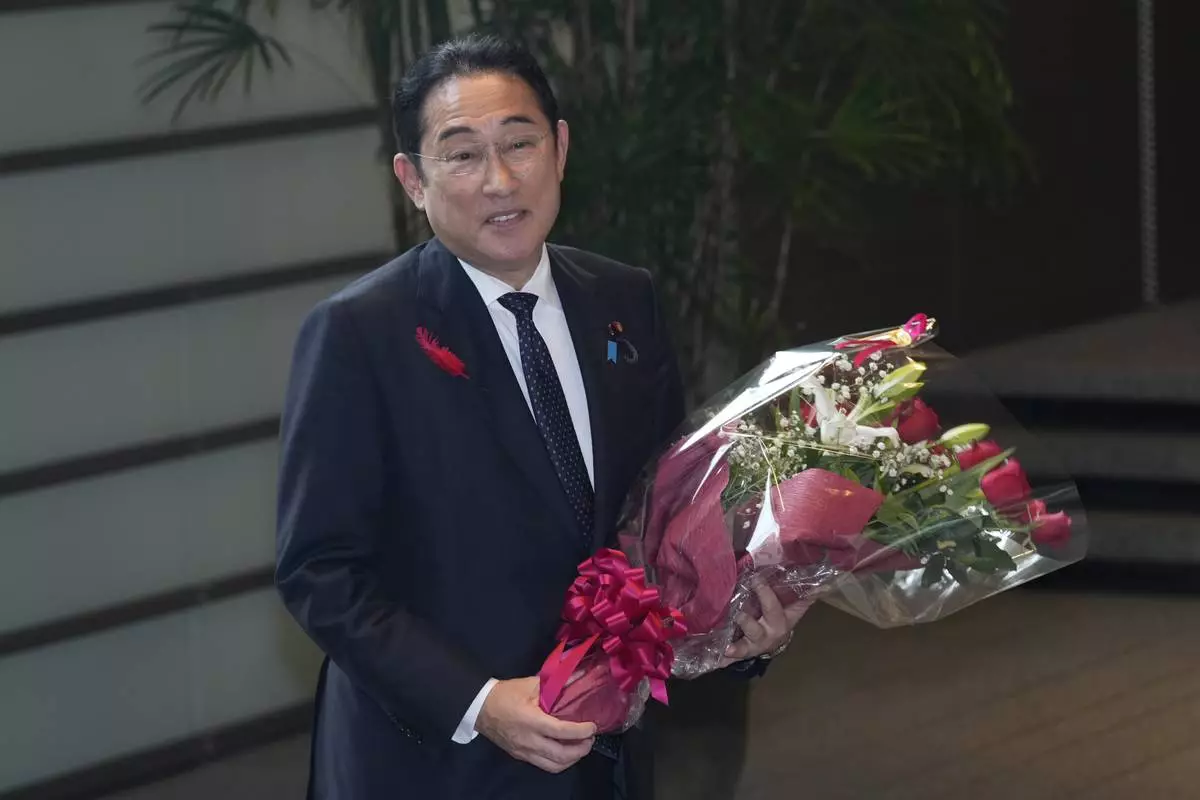
Japan's outgoing Prime Minister Fumio Kishida stops as media members asked him to make a comment before he leaves the prime minister's office in Tokyo Tuesday, Oct. 1, 2024. (AP Photo/Hiro Komae)
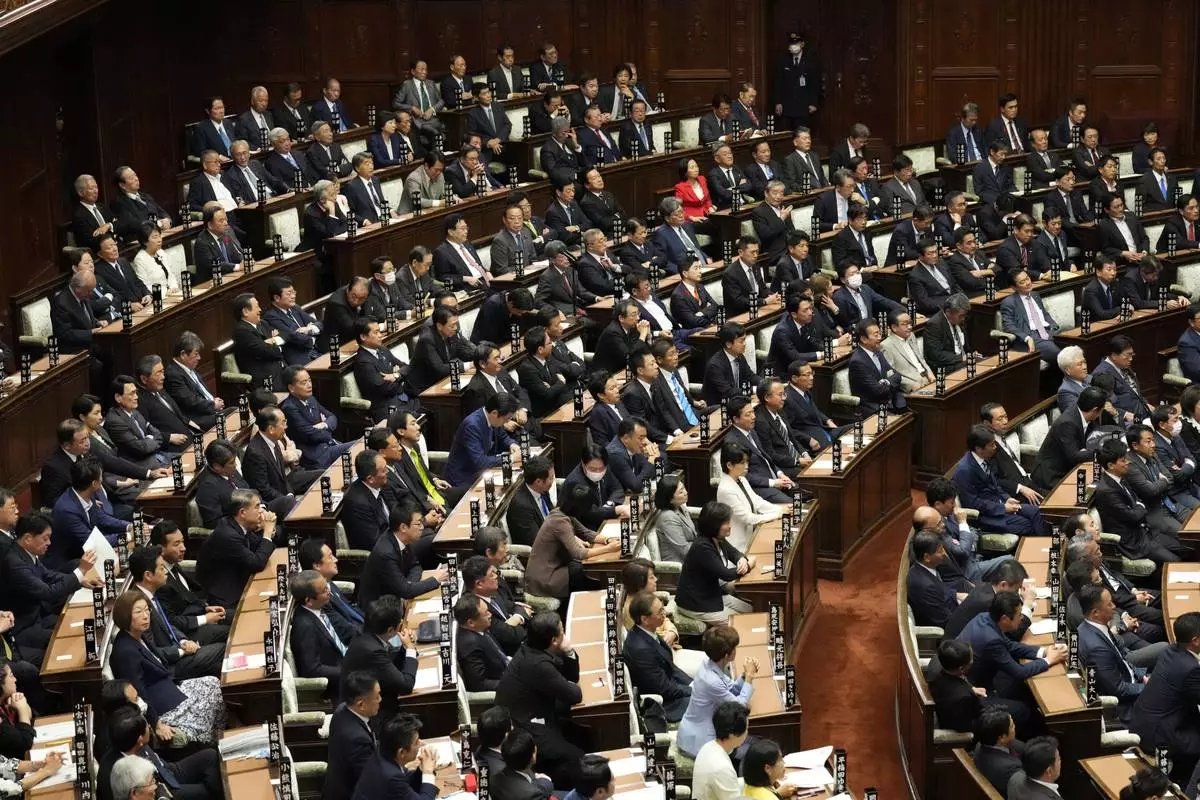
Lawmakers wait for the start of the extraordinary session at parliament's lower house Tuesday, Oct. 1, 2024, in Tokyo. (AP Photo/Eugene Hoshiko)
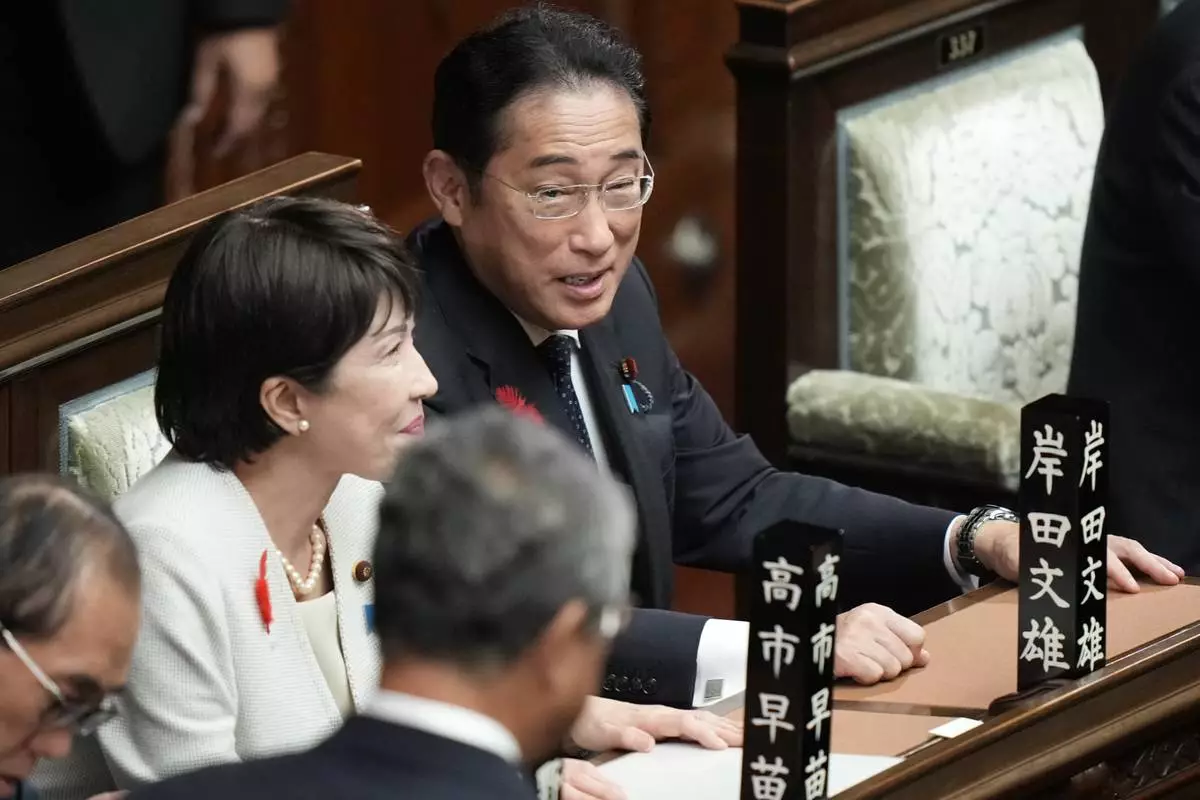
Japanese outgoing Prime Minister Fumio Kishida, right, and Economic Security Minister Sanae Takaichi talk ahead of the extraordinary session of parliament's lower house Tuesday, Oct. 1, 2024, in Tokyo. (AP Photo/Eugene Hoshiko)
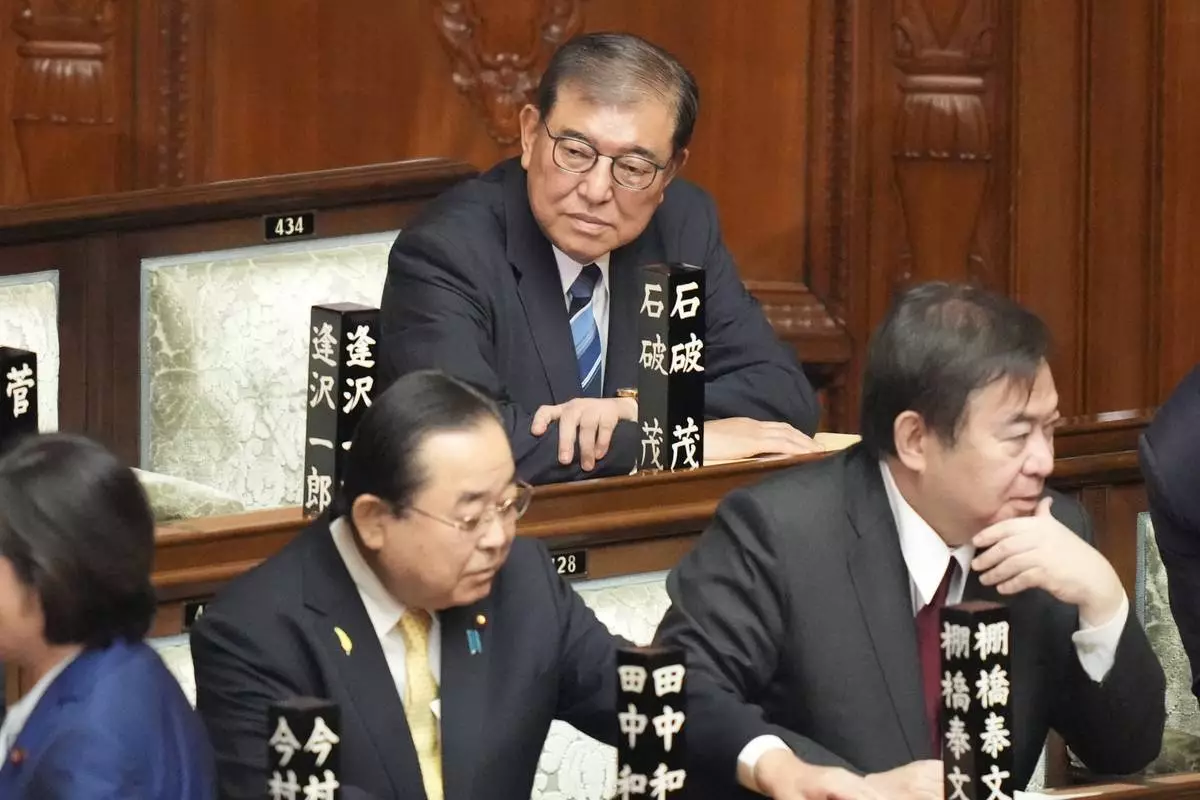
Shigeru Ishiba, top, sits ahead of the extraordinary session of parliament's lower house Tuesday, Oct. 1, 2024, in Tokyo. (AP Photo/Eugene Hoshiko)

Japan's outgoing Prime Minister Fumio Kishida, front, is seen off as he leaves the prime minister's office in Tokyo Tuesday, Oct. 1, 2024. (AP Photo/Hiro Komae)
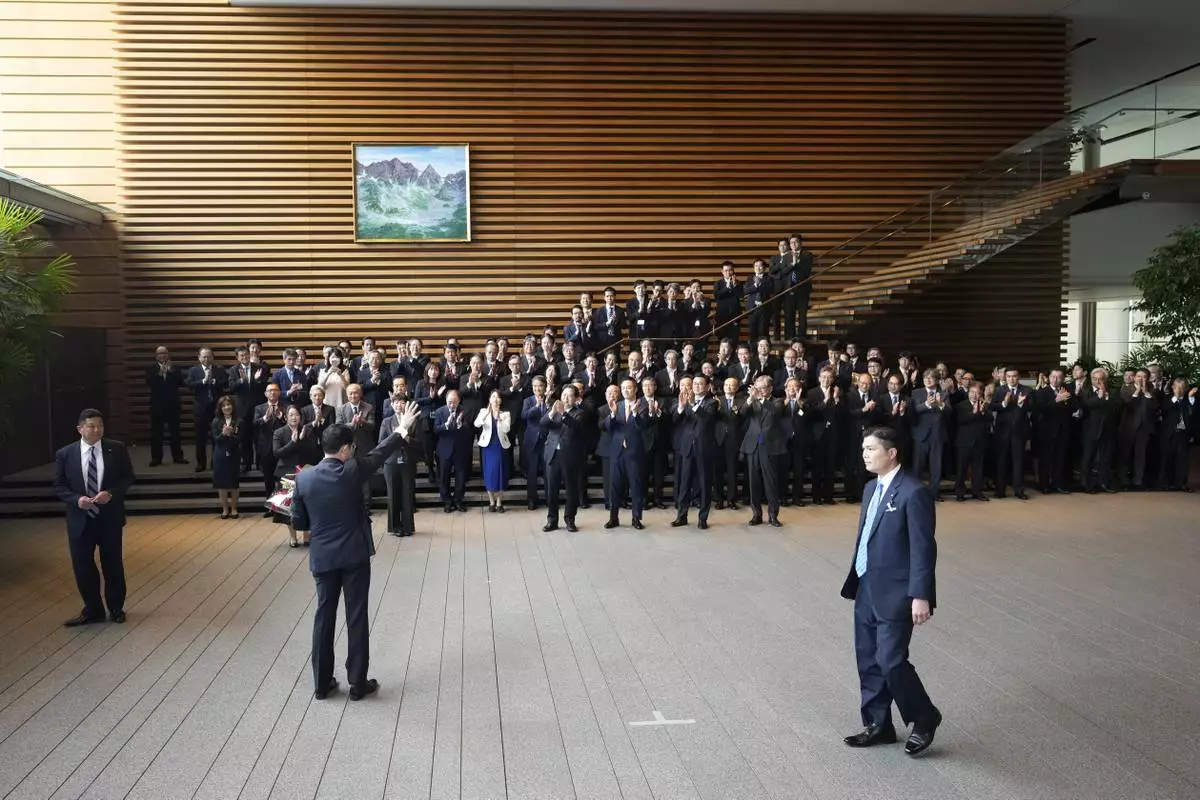
Japan's outgoing Prime Minister Fumio Kishida, center left showing his back, waves towards staff members and politicians as he leaves the prime minister's office in Tokyo Tuesday, Oct. 1, 2024. (AP Photo/Hiro Komae)
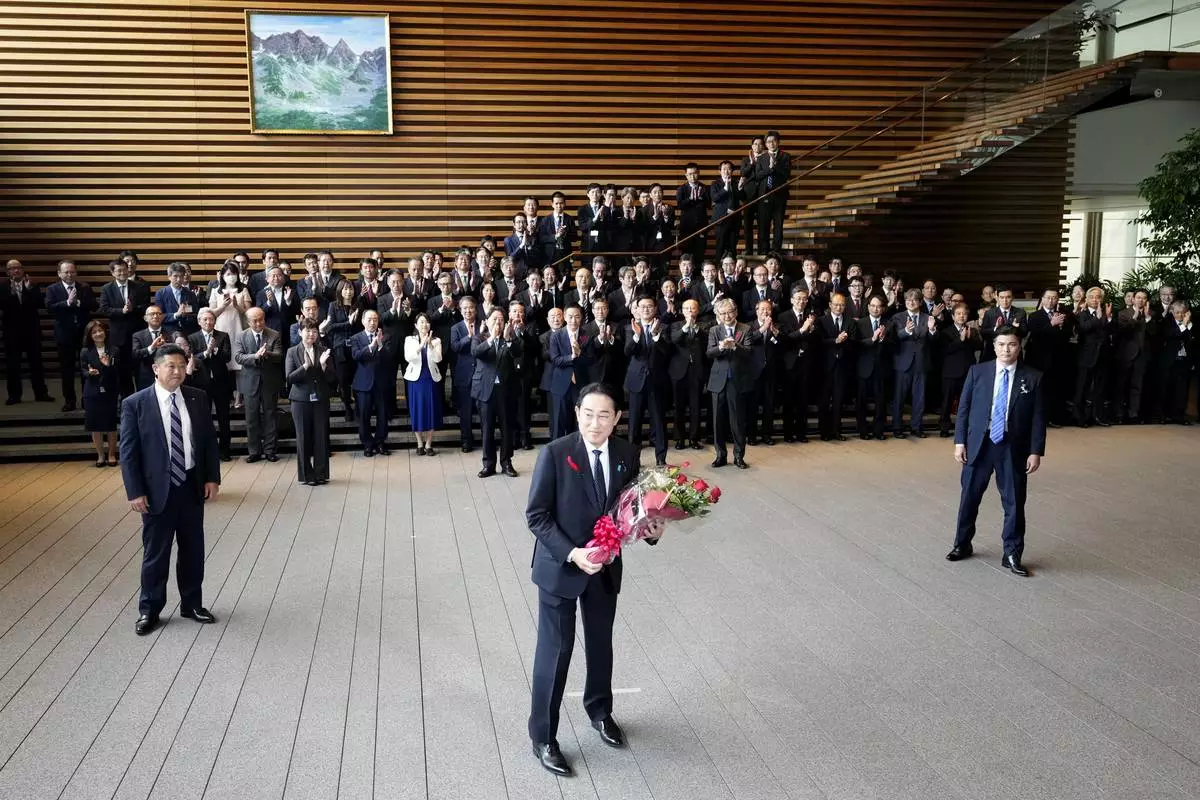
Japan's outgoing Prime Minister Fumio Kishida, center, smiles as he leaves the prime minister's office in Tokyo Tuesday, Oct. 1, 2024. (AP Photo/Hiro Komae)
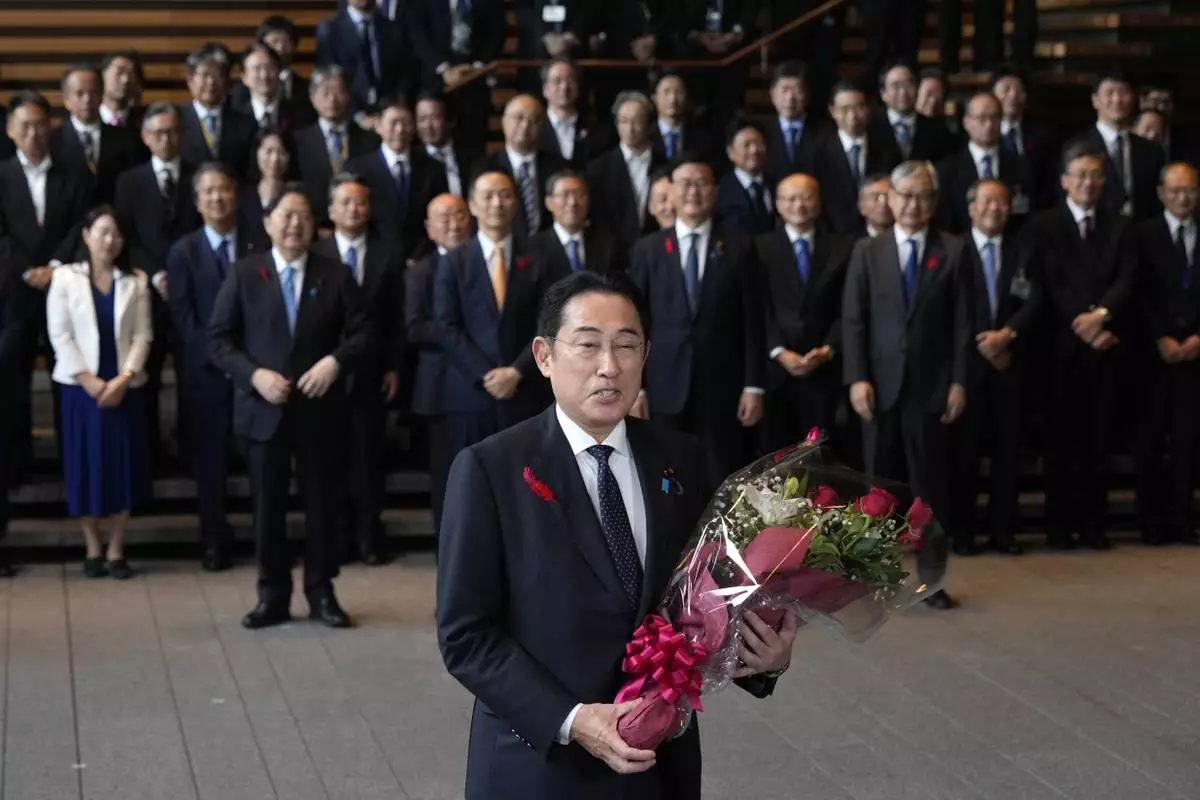
Japan's outgoing Prime Minister Fumio Kishida, center, speaks as he leaves the prime minister's office in Tokyo Tuesday, Oct. 1, 2024. (AP Photo/Hiro Komae)
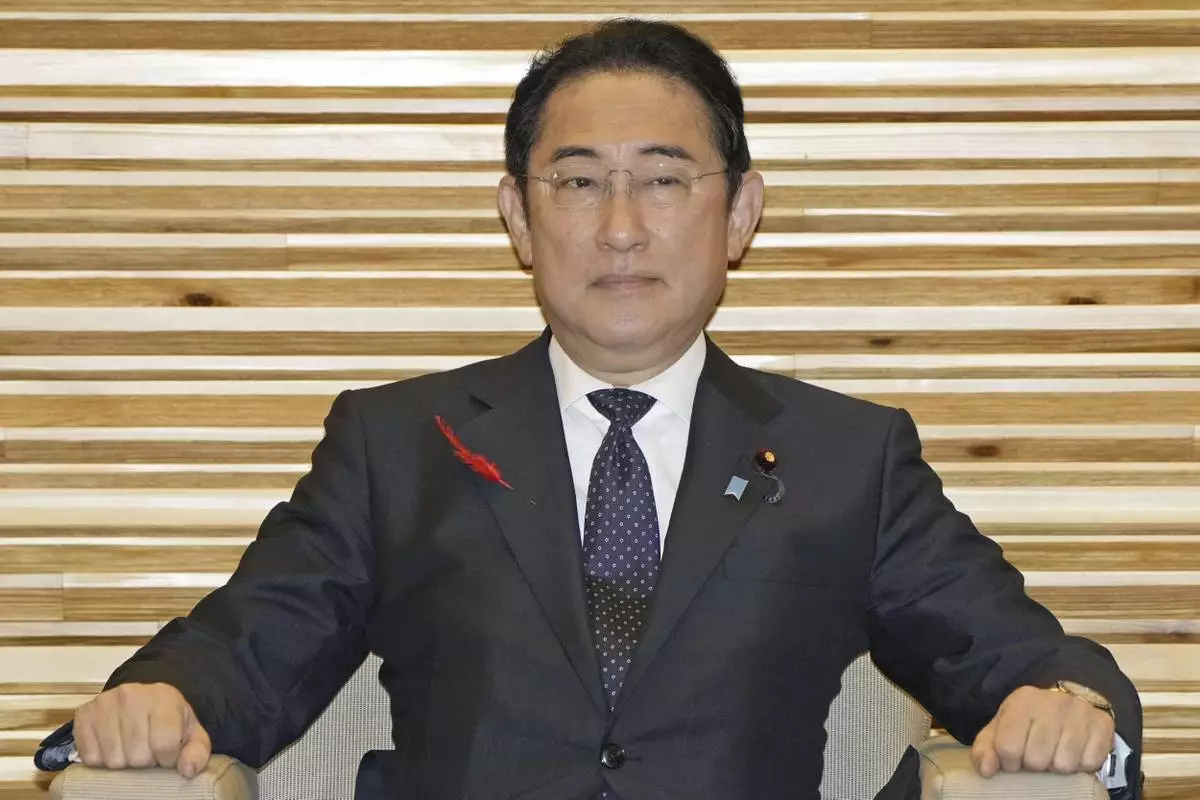
Japan’s Prime Minister Fumio Kishida attends a Cabinet meeting at his office in Tokyo before his resignation Tuesday, Oct. 1, 2024. (Kyodo News via AP)
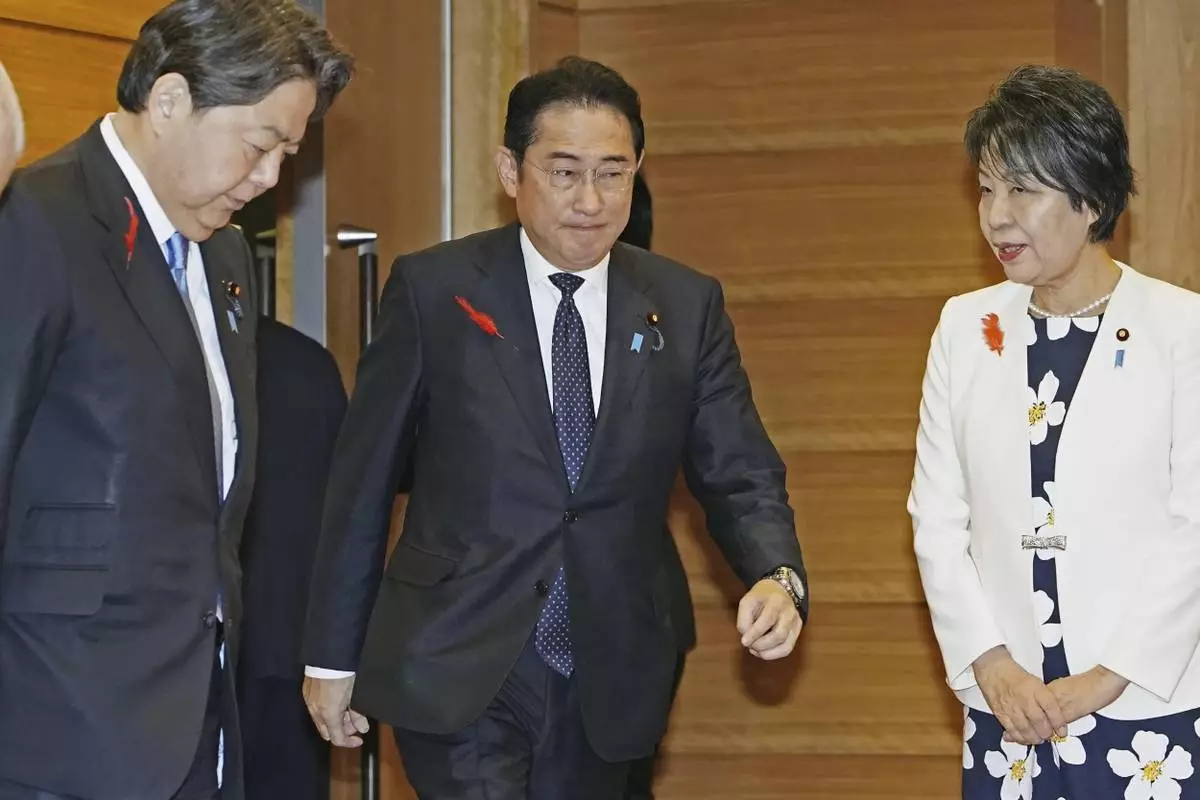
Japan’s Prime Minister Fumio Kishida, center, attends a Cabinet meeting at his office in Tokyo before his resignation Tuesday, Oct. 1, 2024. (Kyodo News via AP)



